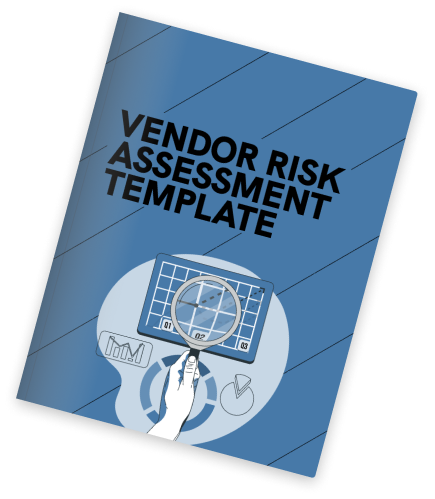
The benefits of outsourcing business functions to third parties are undeniable, such as lower operational costs, enhanced supply chain stability, smoother entry into new markets. But relationships with third-party vendors, contract manufacturers, traditional suppliers, agents, distributors, technology providers, and more are inherently risky. And as the third-party networks that companies rely on grow larger and more complex, identifying and mitigating the associated third-party risks becomes more challenging.
Third parties seem to be one of the weakest links in companies' security policy, so vendor risk mitigation is crucial for each organization. It's a process in which organizations take steps to reduce adverse effects. It can involve accepting a particular risk, aiming for a peaceful co-existence, or ignoring it altogether. Risk mitigation strategies can also involve proactively thwarting identified risks from materializing by using controls or proactively responding in the face of a risk event.Understanding the nature of vendor risks and identifying them is an essential component of effective vendor risk management, which starts with adequate regular due diligence on all your vendors.
Monitoring and managing third-party vendors are critical components of an organization's security. That's why companies that deal with third-party service providers, vendors, and suppliers need to develop a comprehensive vendor management program that will make it easier to work with vendors and manage different types of vendor risks.
Download our free vendor risk assessment template to ensure you understand how much risk you'll take on when working with a specific vendor and mitigate potential risks as much as possible.

Companies should take a holistic approach to manage risks across their business and vendor networks and use best practices. Third-party vendor risk management programs should consider all the inherent vendor risks posed to the business and follow essentially the same action plan: third-party risk assessment, prioritization, mitigation, and monitoring. The centerpiece of any VRM program is a carefully planned third-party vendor risk mitigation process.
Every company needs to identify the third-party risk mitigation strategies that are most appropriate for it. Such risk mitigation strategies are designed to eliminate, reduce, or control the impact of known risks throughout the entire third-party risk management lifecycle injury or fiasco. With these strategies in place, risks can be foreseen and dealt with. Each company has its approach and comfort level when it comes to risk. So first, you'll need to determine your company's risk appetite and tolerance to guide your vendor management program. Specifically, your leadership team has to decide which types of risks and the amount of each risk the company is willing to accept.
Each third-party vendor opens your company to potential risk, and that risk increases as their access to your systems and data increases, so you must do your due diligence. Determine how critical the vendor is to the success of your business and what potential risks they could pose.
Categorize and assess each vendor, services provider, and supplier based on their level of access to your systems and information. This assessment should also review each vendor's third-party risk based on their supply chains. By understanding and acknowledging the risks that third-party vendors can present to your company, you can work to address, reduce and/or eliminate those risks proactively.
If you need to assess hundreds of vendors, doing manual due diligence checks can be very time-consuming.
But with START, you'll be able to organize and automate your VRM program and streamline assessments, making the process more efficient.
Outline KPIs for critical risks, for example, cybersecurity, data security, and operational resilience for each vendor. Then, create strong vendor contracts that set out the vendor risk management metrics your company can use to terminate a relationship if KPIs for critical risks are not met.
It's also essential to continuously monitor third parties in real-time to ensure that you catch and address any new risks. Continuous monitoring allows risk managers to identify changes and take immediate action to protect your company or work with the vendor to remediate vulnerabilities.
When mitigating third-party risk, it's crucial to develop a mitigation strategy based on the cost/benefit analysis of possible mitigations and which closely relates to and matches your company's profile. The best mitigation strategy may lower the probability of risk and the outcome's severity or reduce the organization's exposure to the risk. It's possible to employ more than one vendor risk mitigation strategy to attain optimal results.
So how to mitigate third-party risk? There are several common third-party risk mitigation strategies, including risk avoidance, acceptance, transference, and limitation.
Vendor risk management isn't a task to check off your list. Risk management is an ongoing effort that cannot stop after the risk identification phase or a qualitative risk assessment. When not managed properly, vendor risk can lead to security breaches, financial loss, reputation damage, lost business, and in some industries, regulatory penalties. But cyber risks and other third-party-related risks can be mitigated by developing, implementing, and maintaining a strong and comprehensive vendor risk management program.